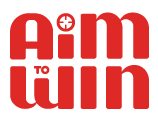If you’re trying to achieve excellence in the workplace, there’s no better way than to focus on your workforce to help them to leverage their strengths.
Your people are the most important part of your business—so how can you engage them, develop their skills, and get them to the next level?
Strength-Based Management
Today, let’s talk about strength-based management, and why it’s critical to focus on your leveraging your team’s strengths and passions instead of fixing their flaws.
Stop Focusing on Weakness
The topic of weakness or flaws appears often in business performance reviews and employee development. We tend to ask, “What are your weaknesses?” or “How can you improve?” But the best way to achieve excellence is actually to stop focusing on fixing flaws and target their strengths.
Master Your Strengths
Consider Shaquille O’Neal. During his time in the NBA, he had a terrible weakness for shooting foul shots. But would he have seen the same success if he’d focused on fixing those foul shots, instead of honing the skills that made him such a powerful inside force? Probably not.
The key here is to master your strengths, working to achieve consistently near-perfect performance. Shaq probably still got some grief over his foul shots, but he chose to prioritize his strengths instead—and that’s what made all the difference.
Develop a Strength-Focused Workplace
Let’s apply this concept to your organization.
Identify Their Strengths
As a leader, it’s your job to be aware of your people’s strengths. This goes both ways of course: your employees should also be aware of their professional strengths and passions (self-awareness). If they aren’t, spend some developmental energy to help them understand what they bring to the table. Assessments can be very helpful here.
Projects or Clients instead of Roles and Territories
Once you’re aware of these personal strengths, think outside the box to match them with your company’s needs. Instead of sorting people into specific roles or territories, consider moving them around by project or client, according to their strengths.
This allows you to decentralize the decision-making process, allowing people to make important decisions in their areas of strength.
Coach Their Strengths – Not Weaknesses
When it comes to developing your team, you should help them grow their identified strengths. Often, we think about what people can’t do, using workplace training to bridge the gap between their failures and company needs. Instead, focus on coaching their strengths.
Let’s go back to Shaq for a minute. In his career, he probably got some coaching on his foul shots, but the bulk of it went to footwork, rebounds, and positioning—all the things that brought him, not just success, but also excellence.
In the same way, you want to help your team hone their greatest strengths into consistent skills—and raise your organization to new heights.
Make Strength Building Your Culture
Finally, don’t forget to ingrain this strength-focused attitude into your workplace culture. So often, we hear of company cultures that emphasize what workers do wrong.
Flip this around for your team, cultivate an environment where everyone focuses on who’s strong in which areas—and works to leverage these strengths. Reward strengths rather than punish weaknesses, and focus your development efforts on honing these strengths.
The Payoff of Workforce Strength Focus
Developing your people’s strengths is an intensive process, especially in a company of scale—but the high-impact payoff is well worth the trouble.
In the end, if you developed a Strength-Based Culture you will find that you’re stronger, more motivated team leads to a stronger organization as a whole.

